Farm Fertilizers Can Contain ‘Forever Chemicals’ From Sewage
8:38 minutes
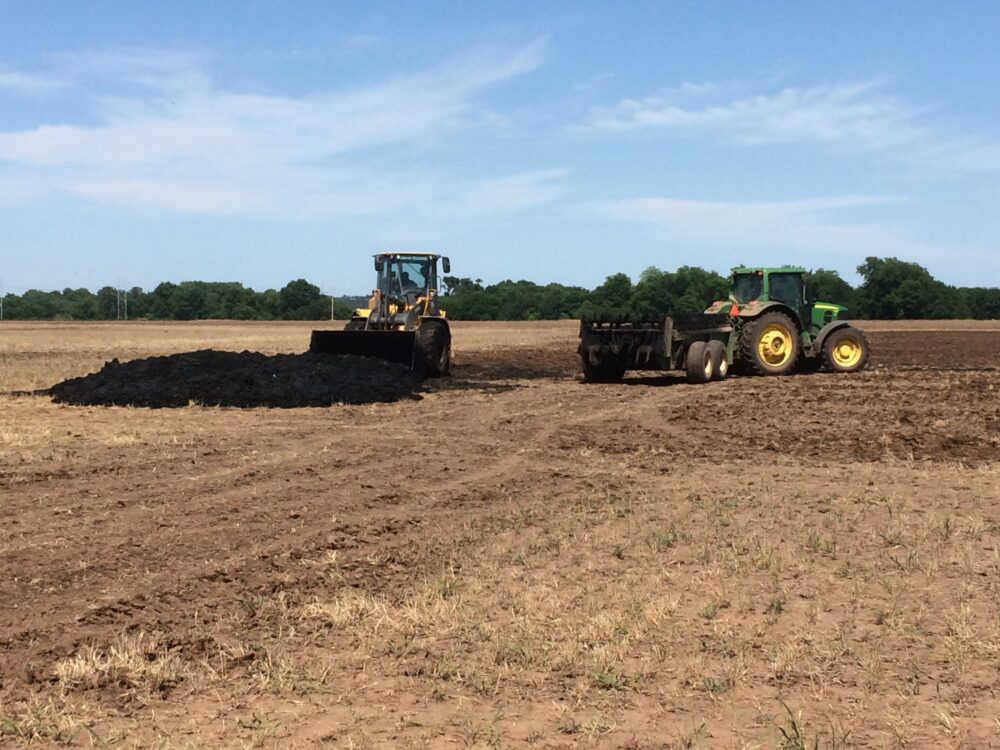
This article is part of The State of Science, a series featuring science stories from public radio stations across the United States. This story, by Barbara Moran, was originally published by WBUR.
The Deer Island Wastewater Treatment Plant is a pollution success story. Over the last several decades, it transformed Boston Harbor from a nationally embarrassing cesspool into a swimmable bay.
The treatment plant takes everything the people of Greater Boston send down their sinks, toilets, showers and washing machines — plus industrial waste — and treats it. The treated water is clean enough to let out into the ocean. The remaining sludge gets recycled into fertilizer that’s used in nearly 20 states.
But now that fertilizer is raising fresh concerns. That’s because wastewater treatment plants like Deer Island were not built to handle the toxic “forever chemicals” known as PFAS.
The treatment process concentrates PFAS chemicals in the sludge, and therefore in the fertilizer, leading environmentalists and public health advocates to call for an immediate end to its use. Others are not sure that a full ban on sludge-based fertilizer, or “biosolids,” is the answer. But there is widespread agreement that we have only begun to grasp the extent of the problem.
“I think we’re only starting to discover how important biosolids are as a source of PFAS contamination,” said Heidi Pickard, a Harvard doctoral student who is analyzing soil and corn from farms contaminated by sludge-based fertilizer.
“Most states have not even begun to test to see if biosolids that have been applied to land are contaminated, that soil is contaminated,” Pickard said. “I think if they go and look, they’re going to discover that this is a huge contamination issue everywhere.”
Forty-three communities — about a third of the people in Massachusetts — send their wastewater to Deer Island. Industrial and household waste, stormwater, the liquid that leaks from landfills and the slop pumped out of septic tanks — it’s all tunneled to the plant with its iconic egg-shaped tanks. On average, the plant receives and treats more than 330 million gallons of wastewater each day, making it the second-largest treatment plant in the country, by volume.
Because thousands of consumer and industrial products — from waterproof cosmetics to toilet paper to firefighting foam — contain PFAS, the wastewater coming into Deer Island, like wastewater everywhere, is contaminated with the chemicals.
“What gets into wastewater is just about everything that we use in our society, because it’s the pollution sink for what’s out there. Which is a big deal when we’re talking about PFAS,” said Laura Orlando, a civil engineer and senior science advisor for Just Zero, a nonprofit focused on waste.
Treatment plants don’t remove PFAS from wastewater or sludge, and there’s no easy or cost-effective way to do it, Orlando said. It’s also not their job.
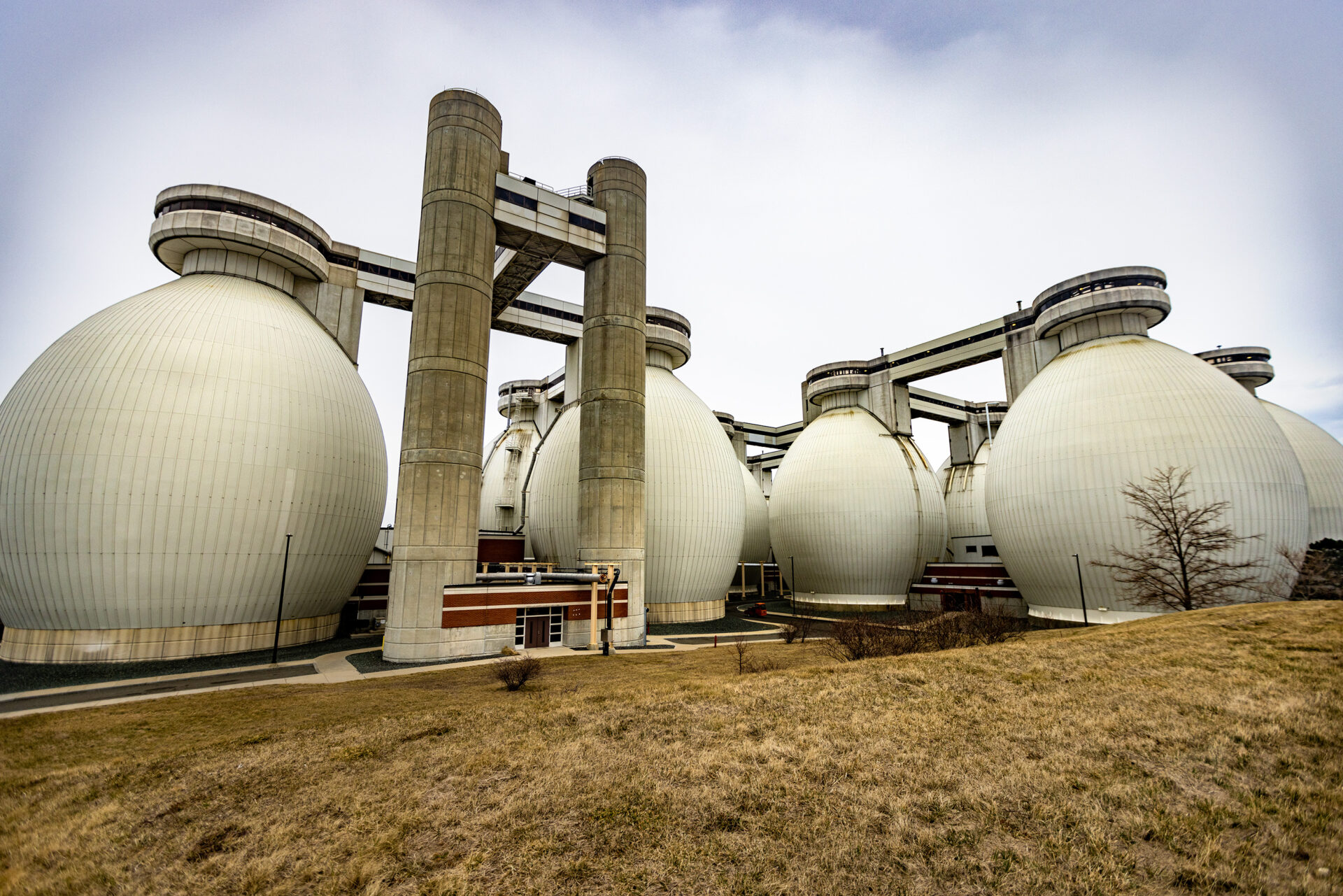
Wastewater treatment plants are designed to remove excess nutrients like nitrogen and phosphorus, kill pathogens and filter out items like gravel and sneakers that find their way into the waste stream. “It’s not about, ‘take out this chemical, take out that chemical, reduce your PFAS,’ ” Orlando said.
At Deer Island, part of the treatment process happens inside the giant eggs, which are filled with bacteria happily eating sewage. Each egg can hold 3 million gallons of sludge, storing the warm slurry for weeks at a time.
Inside, microbes drastically reduce the volume of sludge, which is useful because the plant then has less to manage. The microbes also give off methane the plant captures and converts into power.
But there’s something else that happens in the eggs: the heat and microbes can transform PFAS chemicals from one form to another. More specifically, certain PFAS molecules known as “precursors” can chemically change into known PFAS toxins. These toxic PFAS then stick around in their final form. These changes can also happen in other places with microbial activity, like soil.
This chemistry is important. Harvard chemist Elsie Sunderland, who studies PFAS precursors, said that their chemical formulas are often closely held trade secrets, making them difficult to track and measure. Sunderland said the only way to get a real handle on how much PFAS is in sludge, or anything, is to stop counting individual types of PFAS, and instead measure the total mass of molecules with PFAS’s telltale carbon-fluoride bond. But there are only a few commercial labs that can do this. Most tests trace only a handful of PFAS chemicals, rather than the thousands that exist.
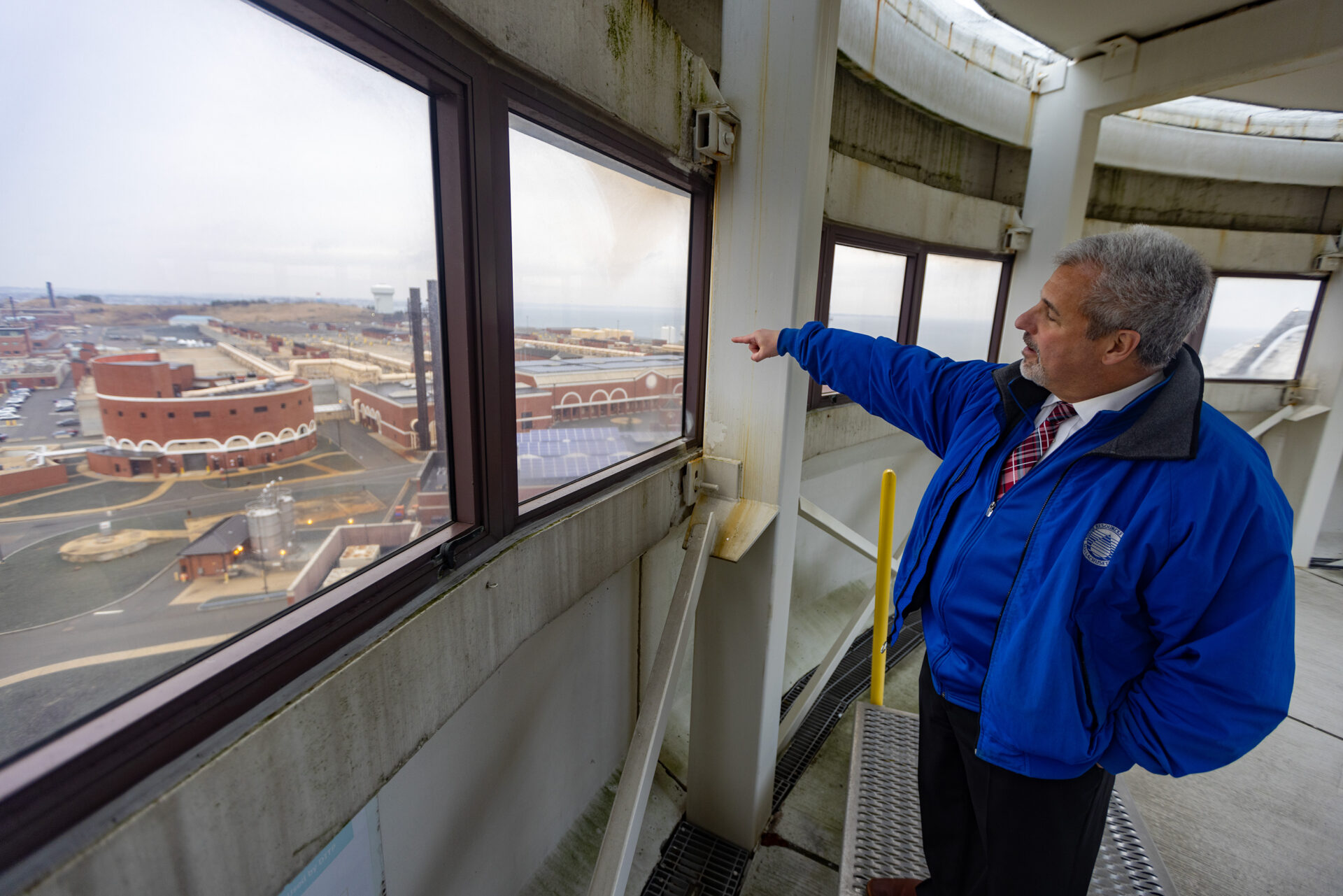
Deer Island has tested its biosolids for 16 PFAS compounds since 2019, and has just begun tracking 40 types. For two of the most concerning molecules, PFOS and PFOA, its monitors find an average of 15 parts per billion combined.
But it’s hard to know what to make of these numbers, and not only because of the measurement problem: right now there’s no state or federal rules that say how much PFAS in biosolids is too much.
A few states have guidelines, but they vary widely. For instance, fertilizer made from Deer Island sludge would be allowed under Michigan’s specs but not Connecticut’s. Maine banned the use of sludge-based fertilizers altogether in 2022, the first and only state to do so. Massachusetts has no guidelines, but regulators are “exploring options.”
Right now, the fertilizer pellets or “biosolids” from Deer Island are used in almost 20 states, including Massachusetts, New York and Pennsylvania. Biosolid-based fertilizers are also sold for home use, according to an analysis by the Sierra Club.
Industry advocates say that turning sludge into fertilizer is a far better option than burning it or throwing it into a landfill.
“We’re putting carbon back into the soil. There’s a lot of nutrients in there and micronutrients,” said Janine Burke-Wells, executive director of the North East Biosolids and Residuals Association. “And when you see what the material does for the soil, it is pretty amazing.”
Many environmental advocates have long been critical of sludge-based fertilizers because they can contain contaminants like heavy metals. Clint Richmond, toxics policy lead for the Massachusetts chapter of the Sierra Club, points out that there are other “emerging contaminants of concern” in sludge, like microplastics and pharmaceuticals, that are largely unregulated.
“Even if biosolids were PFAS-free, I wouldn’t put it on my garden, let’s put it that way,” Richmond said.
During the 1980s and ’90s, Maine went all-in for sludge-based fertilizer, encouraging residents to spread it onto farms, forests and gardens. Around two-thirds of the sludge from Maine’s wastewater plants was spread on the land, often mixed with compost or industrial waste from paper mills.
That sludge, we know now, was contaminated with PFAS. This became painfully apparent a few years ago, when Maine farmers began finding high levels of PFAS in milk and meat. Several farmers shuttered their farms or culled their herds. Others remain on edge as sampling continues.
“It’s like a nightmare you can’t wake up from,” said Maine Department of Environmental Protection Commissioner Melanie Loyzim at a legislative briefing in 2022. “People’s homes and livelihoods have been destroyed. And the scale of the tragedy keeps growing with every sample that we take.”
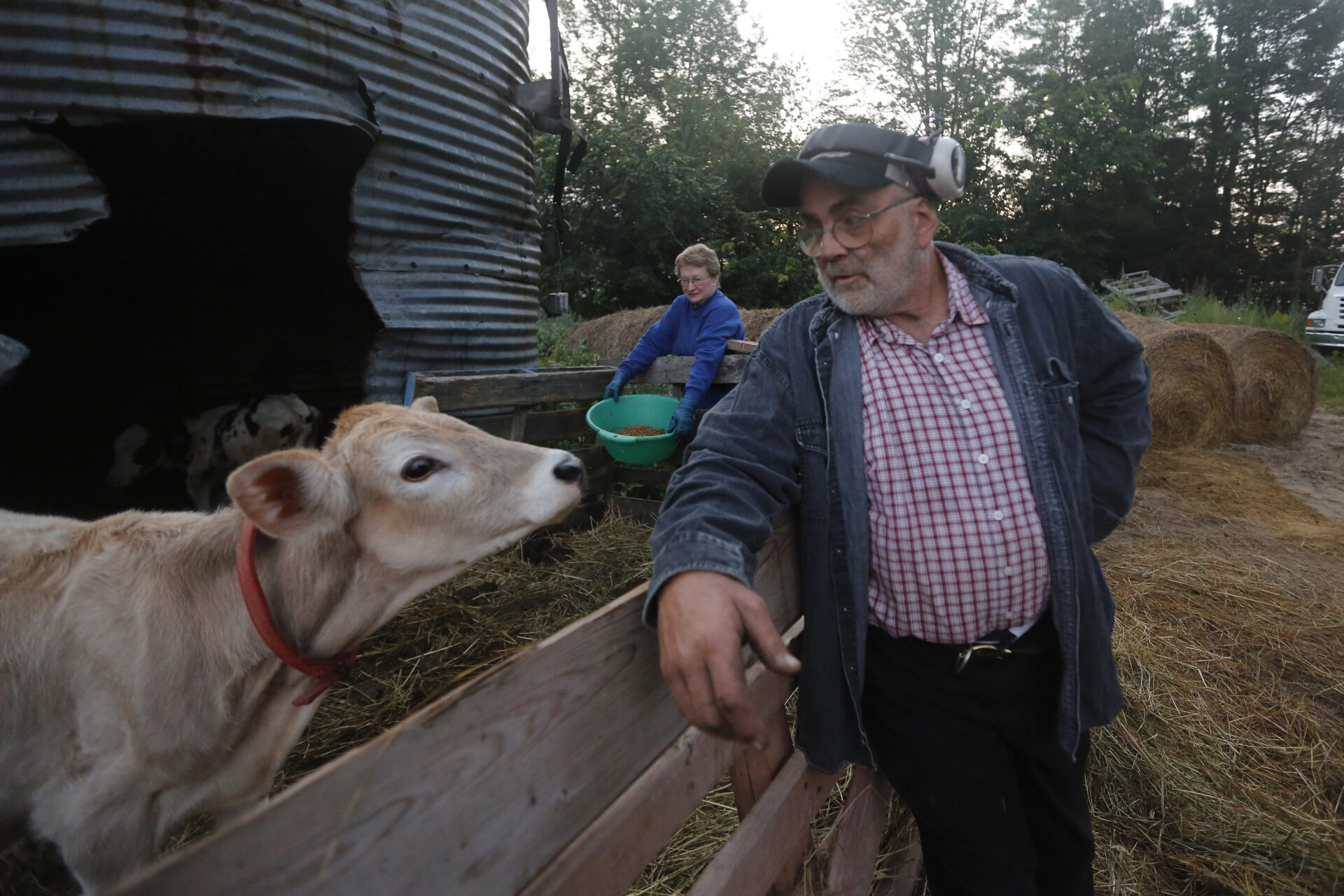
Some of Maine’s problem was likely due to the industrial sludge in the mix, but it’s unlikely that this issue is limited to Maine. About half the sewage sludge in the U.S. is made into fertilizer, according to the National Biosolids Data Project. And since 2016, 19.1 billion pounds of sludge have been applied to American farm fields, according to EPA data analyzed by the nonprofit Environmental Working Group (EWG). EWG estimates that 5% of all crop fields in the U.S. — up to 20 million acres — use biosolids as fertilizer.
But because the crisis emerged in Maine, the state has become a leader at studying how PFAS in fertilizer gets into soil, plants and food. Maine state toxicologist Andrew Smith said the data are complicated. For instance, high levels of PFAS seem to end up in corn stalks but not the kernels, and in lettuce but not potatoes. And certain types of PFAS chemicals end up in meat, other types in plants.
“One of the things we’ve learned is how different the amount of PFAS that can be transferred from soil to plants can be, as you look from one field to another, even for fields on the same farm,” Smith said.
Smith and his colleagues were able to develop PFAS screening levels for soil used to grow hay or corn for dairy cows. But Smith says the latest data are prompting the state to soon revise the levels downward.
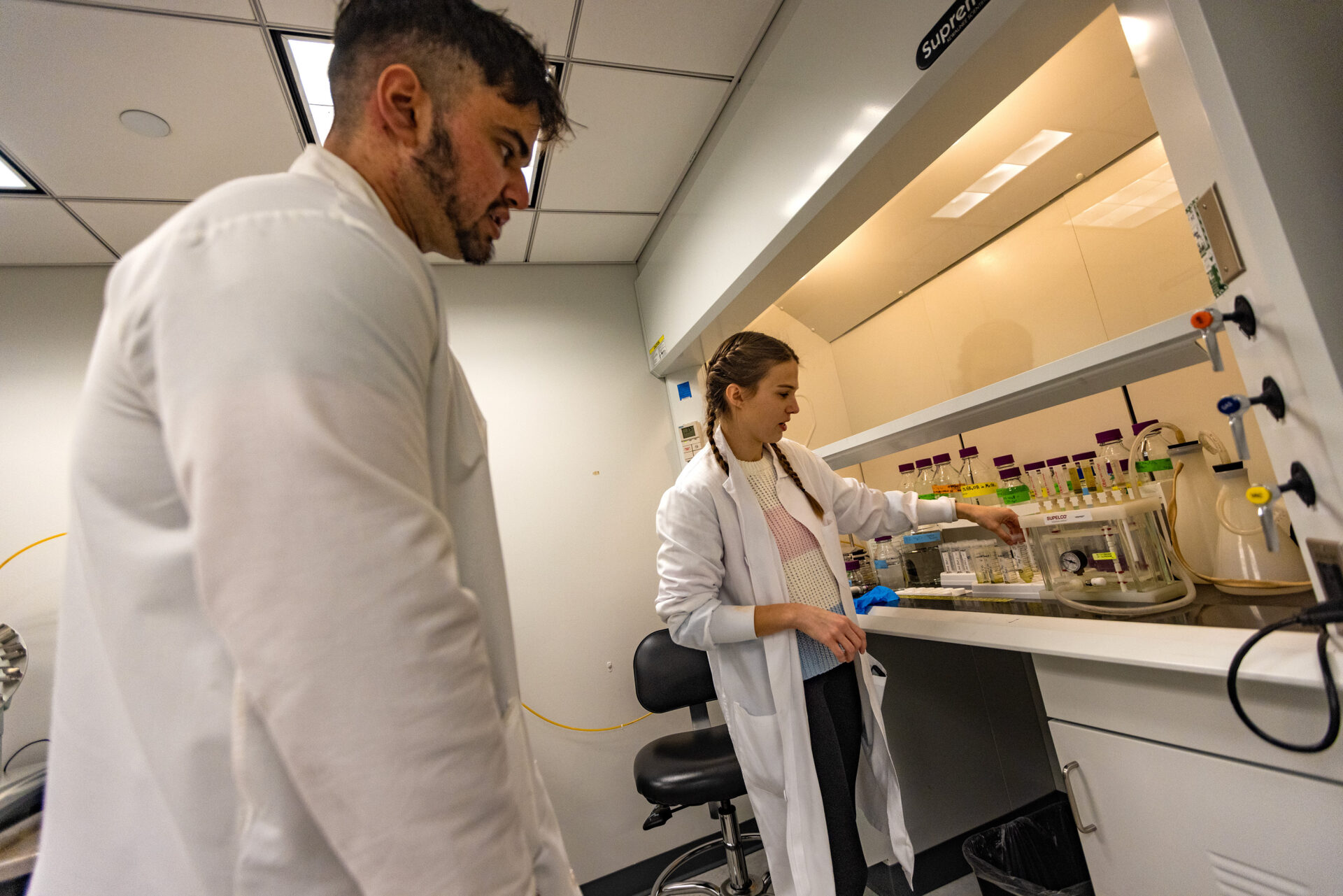
Since PFAS is now ubiquitous in our environment — found in household dust and 98% of Americans’ blood — some argue that PFAS in fertilizer makes little difference for people’s exposure.
But given the growing body of evidence on the chemicals’ harms, many environmental and public health advocates say exposure should be limited everywhere possible, and that includes banning sludge-based fertilizer altogether.
“These forever chemicals … cause harm to human health at very, very, very, very low concentrations to the point where there is no safe concentration of PFAS,” said Just Zero’s Laura Orlando. “The logical thing to do is just not spread it all over the place.”
People in the waste industry agree that PFAS in sludge is concerning. But without guidance from Massachusetts regulators or the EPA, Deer Island’s Director David Duest said the plant’s leaders are waiting for clearer science before deciding where the sludge should go.
“If it works out to be that there’s a concern with toxicity, then obviously we’ll do whatever is necessary” to protect human health, Duest said.
But, he adds, the sludge has to go somewhere, and the other options are not great. Sending sludge to a landfill or burning it costs more money, wastes nutrients and gives off greenhouse gasses.
There may be other mitigation options. Michigan was able to drastically reduce levels of one PFAS chemical in biosolids by requiring upstream industries to reduce PFAS in their wastewater. Others suggest sludge-based fertilizer might prove safe for tree and turf farms, if not for food crops.
But both waste industry advocates and environmentalists agree that the ultimate solution is much bigger: the government should regulate the whole class of PFAS chemicals, and industry should stop using them as much as possible.
“We need to stop making and using these chemicals in unnecessary products. They pollute the entire planet at every stage that they pass through.”
“We need to stop making and using these chemicals in unnecessary products,” said Sonya Lunder, senior toxics policy adviser for the Sierra Club. “They pollute the entire planet at every stage that they pass through.”
“Eliminate it at the source,” said Duest. “Stop manufacturing and using these chemicals.”
The chemical industry may be getting the message. Manufacturing giant 3M, for instance, recently announced it would stop making PFAS by the end of 2025. But some scientists and environmentalists are skeptical.
“3M saying they’re going to phase out PFAS chemistry is both great, but also terrifying,” said Harvard’s Elsie Sunderland. She said she’s concerned that without better regulation, the industry will switch to unfamiliar chemicals that are more difficult to measure, leaving public health scientists playing “chemical whack-a-mole.”
PFAS chemicals have been unleashed into the world without a full grasp of the consequence, Sunderland said, and without better regulation it’s bound to happen again.
“It is tragic, and it’s fully avoidable,” she said. “As a society, we need to demand better regulation of potentially toxic chemicals. It doesn’t make any sense that we did this. We just didn’t think. So we should think before we create the next one, right? And we should fix this as best we can.”
Barbara Moran is an Environment Correspondent at WBUR in Boston, Massachusetts.
IRA FLATOW: This is Science Friday. I’m Ira Flatow, and now it’s time to check in on the state of science.
[AUDIO PLAYBACK]
– This is KERA.
– For WWNO.
– St. Louis Public Radio News–
– Iowa Public Radio News.
[PLAYBACK ENDS]
IRA FLATOW: Local stories of national significance– did you know about half of the sewage sludge produced in the US gets turned into fertilizer? Sounds like a good way to reuse nutrients, but PFAS, those pesky forever chemicals that can cause health problems, are also finding their way into fertilizer and, thus, into our food. And it all starts with a flush.
Here to tell us how PFAS travels from our drains to our grains–
BARBARA MORAN: [LAUGHS]
IRA FLATOW: –is Barbara Moran, climate and environment correspondent at WBUR based in Boston. Welcome to Science Friday. I hear you chuckling a little bit about that.
BARBARA MORAN: Hello. I love that, drains to grains.
IRA FLATOW: Well, let’s start on that journey. Give us the beginning of that journey. How does it get there?
BARBARA MORAN: So I feel kind of stupid admitting this, but I always thought that the stuff that goes into the wastewater treatment plant was just stuff you flushed down the toilet.
IRA FLATOW: Right.
BARBARA MORAN: Right?
IRA FLATOW: Yeah.
BARBARA MORAN: But it’s everything. It’s stormwater, and the stuff that leaks out of landfills, and the stuff out of septic tanks and industrial water waste. So there’s a lot of PFAS in all of that wastewater. And that all goes to wastewater treatment plants, and there’s a lot of bad stuff in there.
The person who made me aware of this idea was this woman named Laura Orlando, and she is a civil engineer who spent her whole career studying wastewater. And here’s how she described it.
[AUDIO PLAYBACK]
– What gets into wastewater is just about everything that we use in our society because it’s the pollution sink for what’s out there, which is a big deal when we’re talking about PFAS.
[PLAYBACK ENDS]
BARBARA MORAN: So all of this stuff, including PFAS, goes to the wastewater treatment plant. It gets concentrated in the sludge. And then it ends up in the fertilizer.
IRA FLATOW: And so if it’s in the fertilizer, then it’s in our food.
BARBARA MORAN: It is complicated, that it gets in some food, it looks like, but not other food. And nobody’s quite sure exactly how much PFAS in the fertilizer gets into the food. And this is an area of really cutting-edge study that’s mostly happening up in Maine because Maine is where they’ve had a huge problem with contamination from this fertilizer.
IRA FLATOW: So the farmers must be really worried about this if they know it’s on their land.
BARBARA MORAN: Yeah, so Maine had a program for years of really putting a lot of this sludge-based fertilizer on farmlands. And a few years ago, farmers started detecting really high levels of PFAS in milk and meat up in Maine, and it’s really taken a toll on farms up there. And as a result, a number of farms have had to close, and Maine is really far ahead on doing a lot of the science in trying to figure out how much PFAS gets from fertilizer into what types of food. Like this one guy, the state toxicologist in Maine, he told me that, for corn, it seems to get into the leaves of the corn but not really in the kernels, which is interesting because that might make a difference for what you could feed the cows.
IRA FLATOW: Well, if it’s going from our drain to the grain, as we said before, why can’t the water treatment plants just remove the PFAS as it flows in and flows out?
BARBARA MORAN: This is what I asked them. I went to Deer Island, which is one of the biggest wastewater treatment plants in the world. That’s where all greater Boston’s wastewater goes. And I said, well, why don’t you just filter it out, and they just laughed at me.
And it’s mostly because of the volume. Deer Island takes in something like over 300 million gallons of wastewater a day, and it’s just filtering the PFAS out of that volume of wastewater coming in, it’s impossible to do.
So Ira, this is the best part. So you get to– I got to go up on top of the sludge tank. So I have this piece of tape from on top of this sludge tank. So this is with David Duest, who runs the whole treatment plant.
[AUDIO PLAYBACK]
– So right under our feet is like how many gallons of–
– About three million gallons of sludge that spends about 22 days on site before it actually gets pumped to our pellet plant for conversion to a fertilizer.
[PLAYBACK ENDS]
IRA FLATOW: Barbara, you get to go to the best places.
I know.
[LAUGHTER]
BARBARA MORAN: I was so psyched. Three million gallons of sludge, right? And this is the sort of great tragedy of this whole story. It’s really sad because it’s not like we’re going to stop making sludge.
IRA FLATOW: Right. Right.
BARBARA MORAN: Ira. And you have to do something with it, and the fertilizer kind of seemed like a good idea. And then if it turns out that just is not going to work, it’s like, what are we going to do with it?
IRA FLATOW: Are the facilities at least testing for PFAS compounds?
BARBARA MORAN: In a few states. In Massachusetts, they do test now. A few states they do. Most places they don’t.
Yeah, so there’s not a lot of testing, so it’s hardly even known how much is in the sludge, how much is in the fertilizer, how much is getting into food. This is really new science.
IRA FLATOW: If the sludge, let’s say, didn’t get turned into fertilizer, where else could it go? What could you do with it?
BARBARA MORAN: We’re each going to get a bucket and keep it in our basement.
IRA FLATOW: There you go.
BARBARA MORAN: Which is coming.
IRA FLATOW: Thank you, Barbara.
BARBARA MORAN: [INAUDIBLE] [LAUGHS] So right, this is the problem. You can landfill it, or you can burn it. And those are terrible.
So landfill, it gives off methane, and then the PFAS is going to leak out into the leachate anyway. And then you burn it, and it’s unclear if that is going to totally destroy the PFAS. So this is the trouble. There’s no great solution.
IRA FLATOW: PFAS– as you know, PFAS are everywhere. They’re in everything. How big of a deal is it that we’re being exposed through fertilizer, then?
BARBARA MORAN: Yeah, that is a great question, and some people give just that argument. They’re like, look, it’s in the air. It’s in the dust. It’s in the drinking water. Maybe this will put a little bit in the food, but so what?
The counterargument to that is, OK, if we do know that it’s somewhere, you should try to cut that source off, that just because it’s everywhere doesn’t mean it’s bad. And if there’s a known source, we should try to deal with it. And we should at least be measuring it and trying to understand it so that we know how exposed people may be getting from that. So I don’t think anybody could argue with the need for more measurement and understanding of what exactly is happening.
IRA FLATOW: So where do we go from here? Are there any solutions underway?
BARBARA MORAN: Yeah. So a lot of environmental groups and public health officials are saying, well, let’s just stop spreading it on land. Let’s just– if we don’t know what to do, why don’t we just stop using it? And Laura Orlando, who we heard from before, put it best.
[AUDIO PLAYBACK]
– There is no safe concentration of PFAS, and so adding it to soil as a fertilizer, it’s a disconnect from the reality of the harm of this family of chemicals. And so the logical thing to do is just not spread it all over the place.
[PLAYBACK ENDS]
IRA FLATOW: One is tempted to say, maybe we could come up with a water filter that would remove it from the drinking water, from the drain. But then that really wouldn’t be the solution because you have PFAS coming from all these other places.
BARBARA MORAN: Oh, well, Ira, you’re on to something because you’re smart. Actually, this is something that’s been tried out and worked in having industrial sources that are known producers of PFAS filter or pretreat their wastewater before it goes to the treatment plants. And that does get the levels down a bit. And also getting all our drinking water treated would help get the levels down.
So there are ways out there to pretreat the water to get less PFAS in it. So there are some people looking at solutions out there.
IRA FLATOW: And it’d also be helpful to just how much of it is out there, which we’re not quite sure either.
BARBARA MORAN: Yeah. Yeah, right?
IRA FLATOW: I know we laugh about it, but it is a big problem.
BARBARA MORAN: It gets so overwhelming sometimes that I do go to this gallows humor with it. But it’s important to figure out what’s going on right. We should be measuring this stuff. We should be getting a handle on it.
IRA FLATOW: Well, Barbara we’re, always happy to have your humor and your gallows with us on Science Friday. Thank you for taking time to be with us today.
BARBARA MORAN: You’re welcome. Thank you.
IRA FLATOW: Barbara Moran, climate and environment correspondent at WBUR based in Boston.
Copyright © 2023 Science Friday Initiative. All rights reserved. Science Friday transcripts are produced on a tight deadline by 3Play Media. Fidelity to the original aired/published audio or video file might vary, and text might be updated or amended in the future. For the authoritative record of Science Friday’s programming, please visit the original aired/published recording. For terms of use and more information, visit our policies pages at http://www.sciencefriday.com/about/policies/.
Rasha Aridi is a producer for Science Friday and the inaugural Outrider/Burroughs Wellcome Fund Fellow. She loves stories about weird critters, science adventures, and the intersection of science and history.
Ira Flatow is the founder and host of Science Friday. His green thumb has revived many an office plant at death’s door.